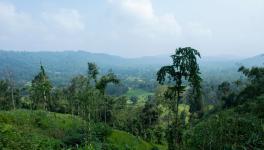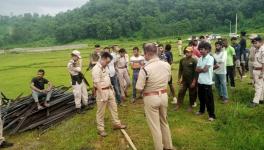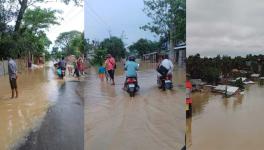Assam Oil Well Blast Ground Report: Locals Angry Over Loss of Biodiversity and Livelihood
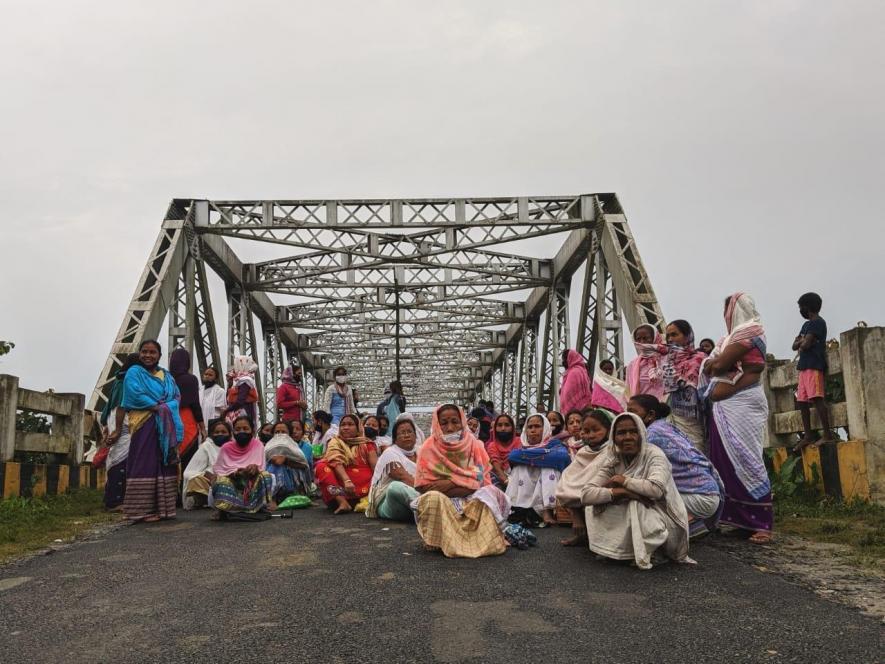
(Sit-in by the locals of Notun Gaon at Kaliapani bridge)
An oil well at Baghjan, Assam caught fire on June 9 following a blast in the oil field. The well had already been experiencing a blowout since May 27, resulting in widespread damage to the ecology and biodiversity of the area. The fire, which had not been successfully contained as on June 10, could be seen from more than 10 km away. While residents of Baghjan village were immediately evacuated, those who continued to live in nearby villages, like Notun Gaon, have been experiencing deterioration of health. The land and aquatic biodiversity has been severely affected—which can be seen from how a dead river dolphin surfaced at the Maguri-Motapung wetland. Tea gardens and crop fields have also been damaged. The actual number of deaths and the extent of the loss of property are yet to be estimated.
Since the discovery of oil and gas by Oil India Limited (OIL) in the Baghjan area of Tinsukia district in 2003, OIL has so far drilled 19 wells here. Well number 5, the one which is experiencing the blowout, was earlier producing around 1 lakh standard cubic metre gas per day from a depth of 3,870 metre. A press release by OIL says, “[T]the [...] well of Baghjan 5 under Baghjan Oilfield of Oil India Limited in Tinsukia district suddenly became very active while work over operations were on... The blowout happened while work over operations were going on to produce gas from a new sand (oil & gas bearing reservoir) at a depth of 3729 meters.”
The workover operation was being carried out by a chartered hire rig owned by M/s John Energy based out of Gujarat, under the supervision of OIL.
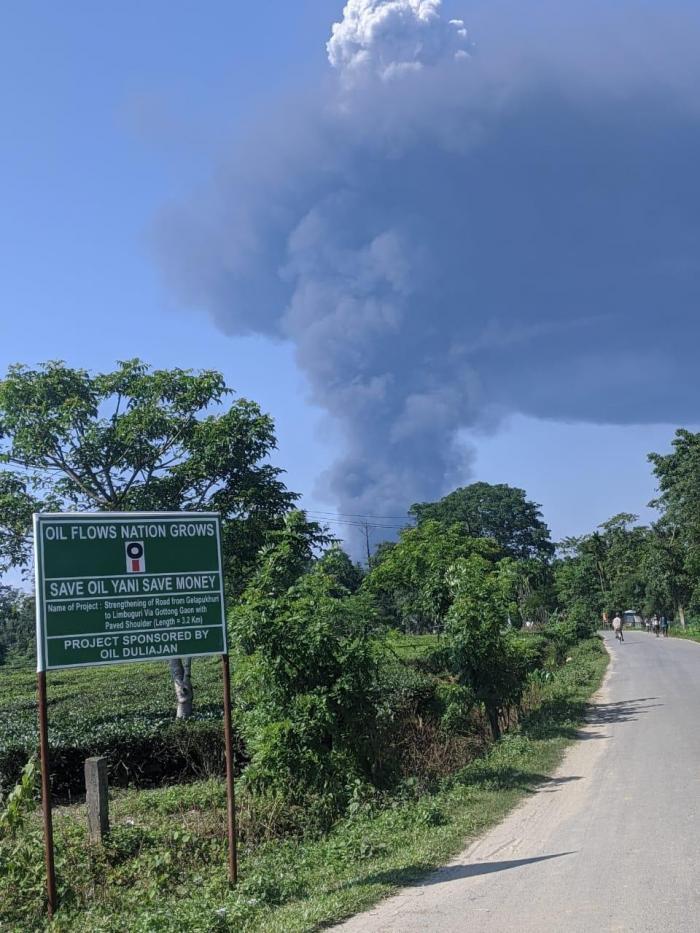
SC Mishra, Chairman cum Managing Director (CMD) at OIL, in a TV interview with a regional media channel, Pratidin Time, said that the gas well at Baghjan was being serviced, and a new sand was being tested at another depth in the same well. The existing well-head was also being repaired. The blowout preventer was also removed, since the well-head was in the process of being repaired. But at that time, unfortunately, the well experienced the blowout.
On June 9, the well caught fire following a blast. OIL is yet to officially declare what caused the blast, but certain sources claim that due to the scorching weather from two days after incessant rain, the gas ignited, resulting in the consequent blast. Another source claims that the locals of Notun Gaon forcibly closed down the operations of another connected OIL well located nearby which increased the pressure on well number 5 resulting in the blast.
Locals of Baghjan and Notun Gaon claim that the well was set up in 2003 without organising any public hearing by the OIL and without any environmental clearance from the authorities even as Baghjan is known to be amidst world’s top biodiversity hotspots. To its North is the confluence of three rivers that together form the Brahmaputra, Dibru-Saikhowa National Park is at an aerial distance of 900 metre; to its South is the Maguri-Motapung wetland, a famous ecotourism spot.
Dibru Saikhowa National Park has a rich collection of flora and fauna many of which are endangered species. It is the 19th biodiversity hotspot in the world. Of the seven parts of the park, one is a wetland and the rest comprises grassland and dense forest.
Also read: Assam OIL Mishap: Price of Profit and Fatal Misadventure by a PSU
Maguri-Motapung wetland has been bearing the utmost brunt of the leakage. The gas leak, which took place only two kilometres away from the wetland, has affected the entire biodiversity of the Dibru Saikhowa National Park and Maguri Motapung beel, endangering the lives of many birds and animal species. The water bodies are highly contaminated with oil spillage and also due to the condensed gas settling down. The contaminated water body of the wetland has reportedly turned blue and yellowish due to the oil spill. Carcass of a river dolphin and several dead fish were reportedly found at the beel with their skins burnt.
The residents of Baghjan and nearby villages are experiencing health issues like skin conditions, breathing problems and nausea added to the sound pollution that the gas leak site has been making for the past 14 days. The villagers have also reported deteriorating health of their livestock as their only source of food is the grass and the leaves which are laden with condensed gas droplets.
Following the explosion on June 9, people had no other choice but to flee from their villages. Scared and panicked, they were seen fleeing with whatever they had managed to get hold of, with small bags of their belongings and caged poultry in their hands. No authorities were present at the time, said locals.
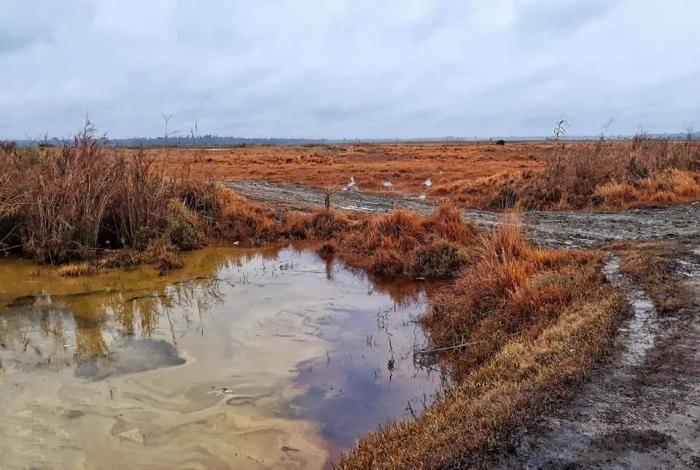
(Green fields have been burnt and turned yellowish, water bodies contaminated. Photo: Gunjan Gogoi)
The Maguri Motapung wetland has been the main source of food and livelihood for the people who live around it. A large number of migratory birds are found in Maguri-Motapung, for which the wetland is globally famous. But because of the blowout, they are seen fleeing the area leaving their nests and eggs. Whether they will return to the same area in the next season is an unanswered question so far. Consequently, there is a high chance that the wetlands would remain barren for a long time, depriving the locals of their source of income.
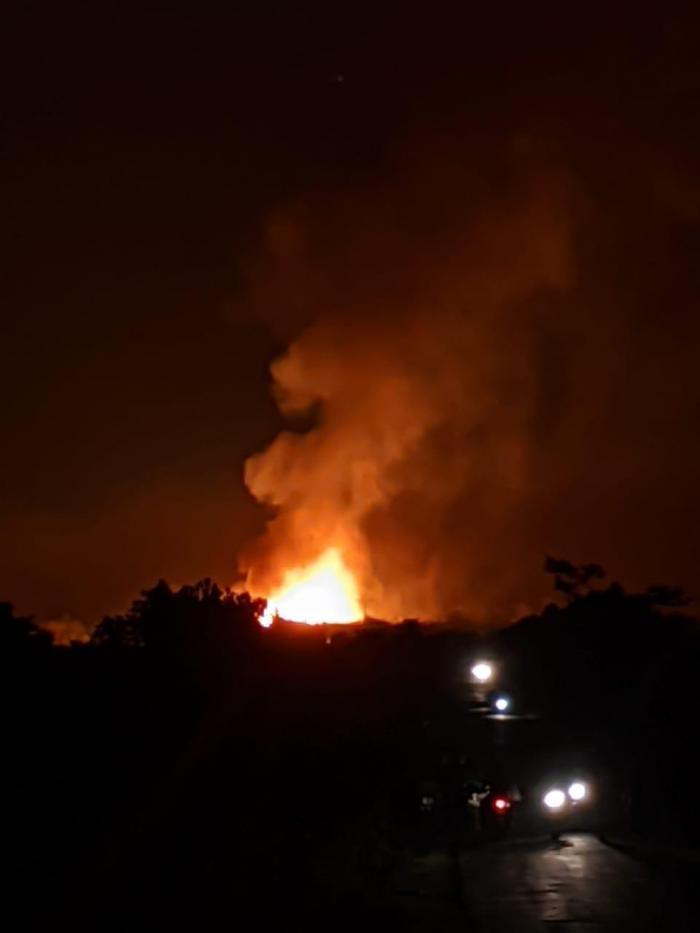
At night, June 9.
The blowout and the explosion has done extensive damage to the environment and the local communities. Villages situated near the OIL well have reported many fire outbreaks which have engulfed several houses and destroyed much of the villagers’ property. All the grasslands and the paddy fields near the OIL well have been burnt. The neighbouring tea gardens have also faced a severe crisis with the leakage turning the soil oily black.
Meanwhile, a magisterial enquiry has been ordered into the reported death of five persons due to the gas leakage from the well. Meanwhile, OIL has appointed an environmental consultant to assess the impact of the blowout.
OIL had called a three-member global expert team based out of Singapore’s Alert Disaster Control. The team reached the site on June 9. "All the operations as per the Singapore-based disaster control team will take about four weeks," said OIL.
At least 6,000 people living within the 1.5 km radius of the natural gas-producing well have been evacuated and sent to the relief camps. OIL has announced financial relief of Rs 30,000 for each affected family.
Several fire tenders from OIL, ONGC, Tinsukia and Dibrugarh districts had rushed to the spot, but failed in controlling the fire.
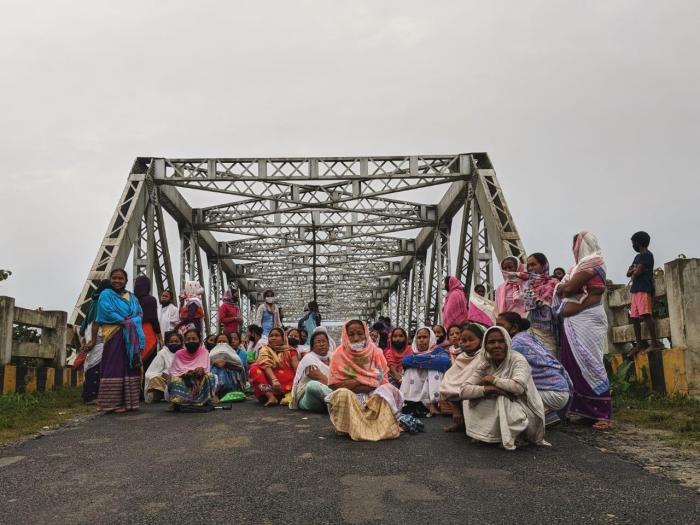
(Sit-in by the locals of Notun Gaon at Kaliapani bridge)
Although OIL has declared compensation packages, many locals are dissatisfied with the overall attitude of OIL towards the social and ecological destruction of Baghjan and the adjacent areas. They question if the destroyed environment, long-term damage to the wetlands and soil, and the deaths of aquatic animals can be compensated for. Many locals from Notun Gaon have also complained that they have not received any form of compensation from OIL or the government. They complained that the administration is biased towards only the Baghjan area, and is neglecting other villages, like Notun Gaon.
On June 3, following six days of blowout, collectively took to the streets to express their frustration. They barricaded Kaliapani bridge, the bridge over Maguri-Motapung wetland which was used by OIL to access the Baghjan wells. Protesters’ only demand was that officials of OIL and concerned authorities from the government come down to the site, meet them and hear their grievances. While residents of Baghjan were immediately evacuated and were sheltered at distant public schools, Notun Gaon’s residents, on June 6, had to themselves convert a nearby public school into a shelter to escape the deafening noise, and the toxic gas and its smell. The locals, frustrated with OIL, had forced them to close down another OIL well situated just one kilometre away from Notun Gaon by relentlessly protesting for its closure.
The villagers have formed their own committees to handle the situation and to set up meetings with the government and OIL—without intervention of any political organisation. The locals fear that political organisations would hijack their issues and would try to profit from the disaster instead.
One of the protesters said, “We manage rather well with the natural resources that we are blessed with. We don’t want any foreign companies to dig up our oil. We don’t want OIL.”
Debojit, a resident of Notun Gaon sums up the local sentiment: “The resources are theirs but the problems are ours!”
Following the peaceful sit-in at the Kaliapani bridge, on June 9, a meeting was set up at the DC office. Villagers had gone to attend the meeting, but it was soon interrupted with the news of the explosion.
At the time of filing this report, although the fire outbreaks in the villages near the OIL well site have been controlled, extinguishing the fire at the OIL well has not been achieved.
Get the latest reports & analysis with people's perspective on Protests, movements & deep analytical videos, discussions of the current affairs in your Telegram app. Subscribe to NewsClick's Telegram channel & get Real-Time updates on stories, as they get published on our website.











